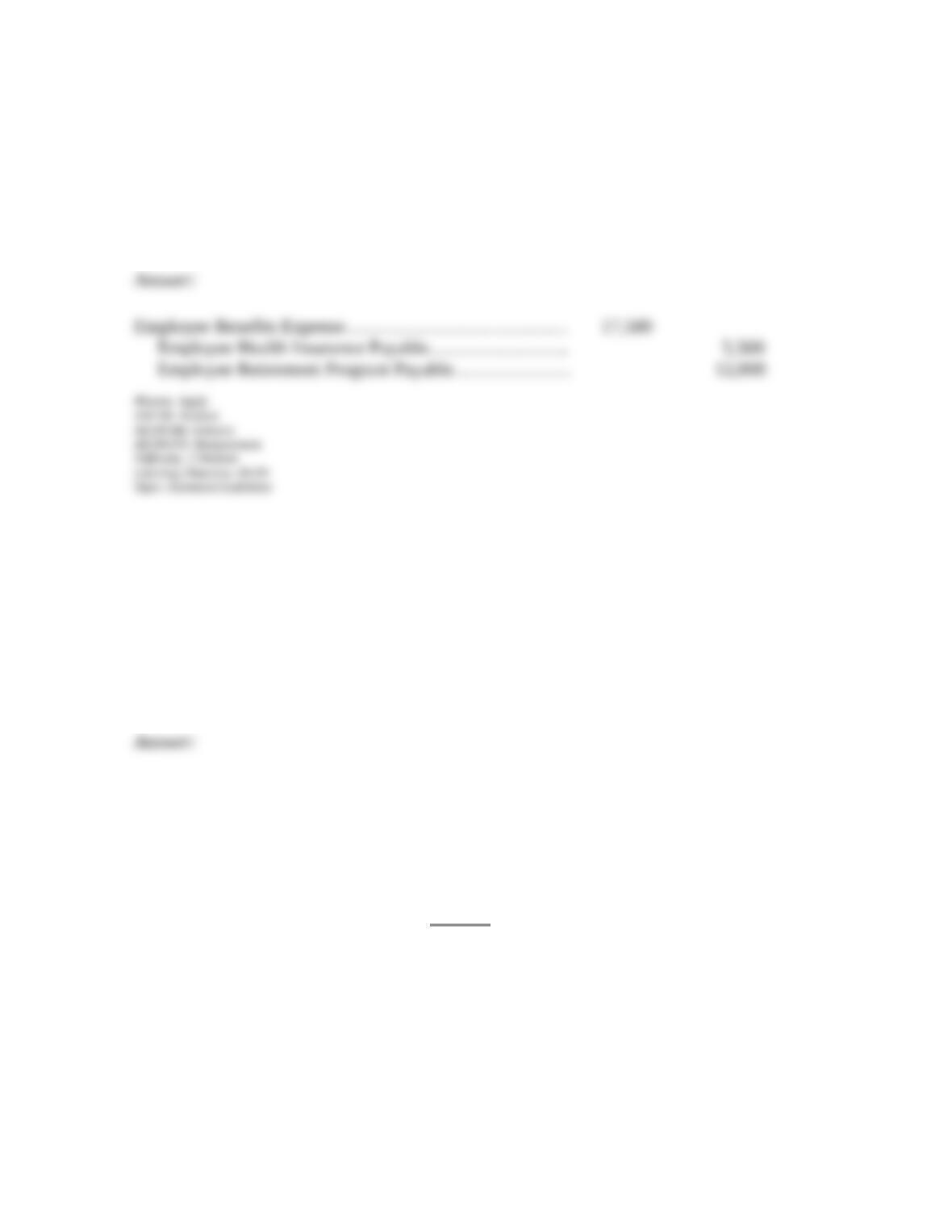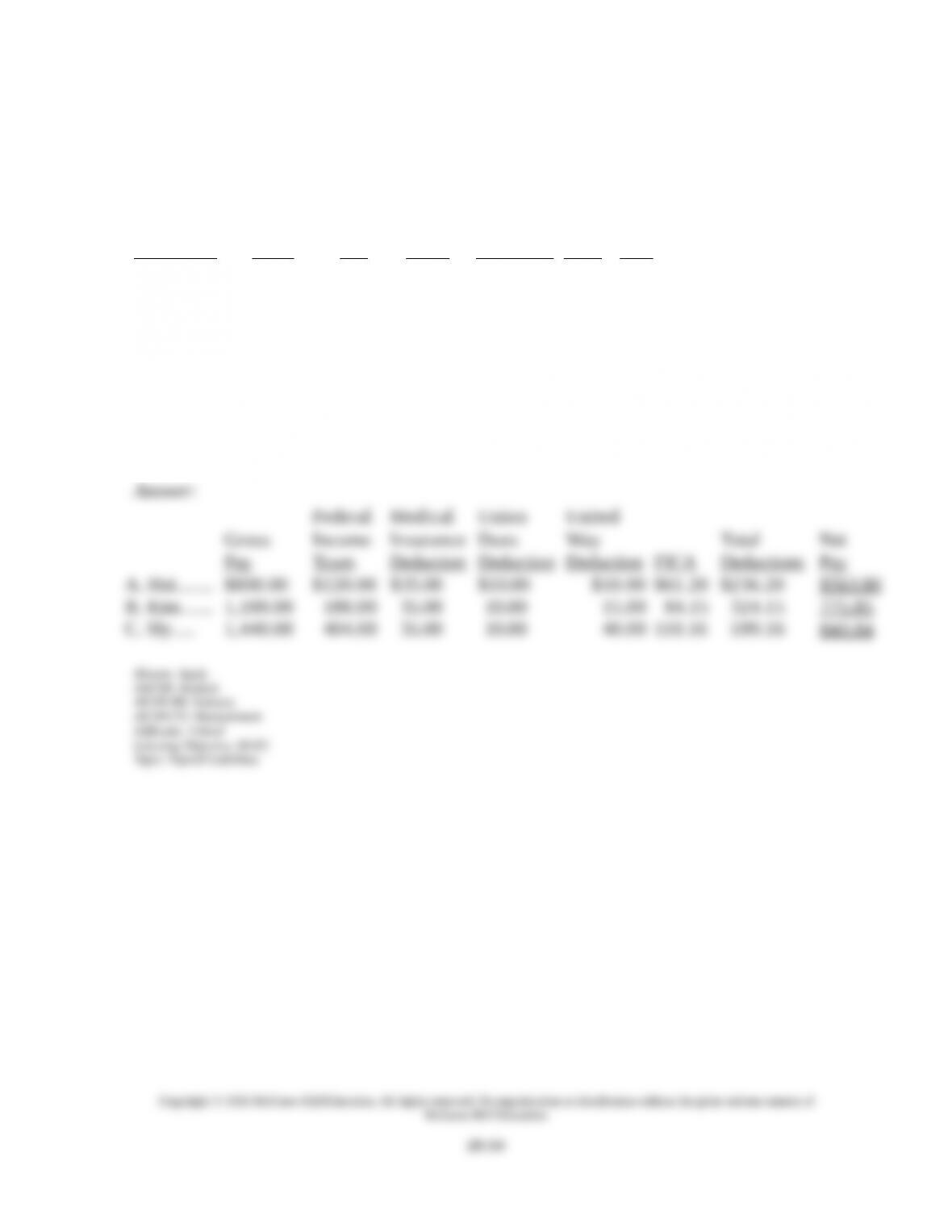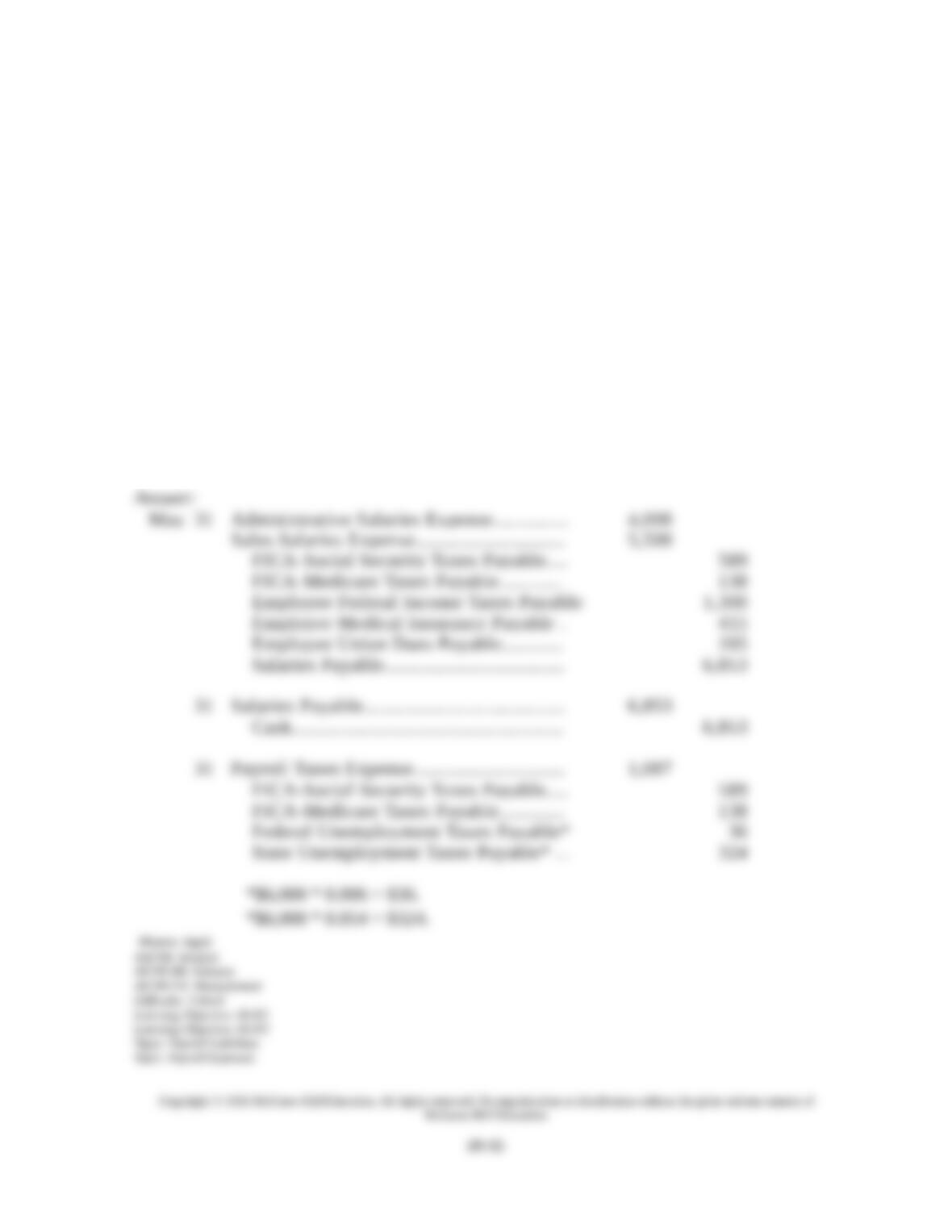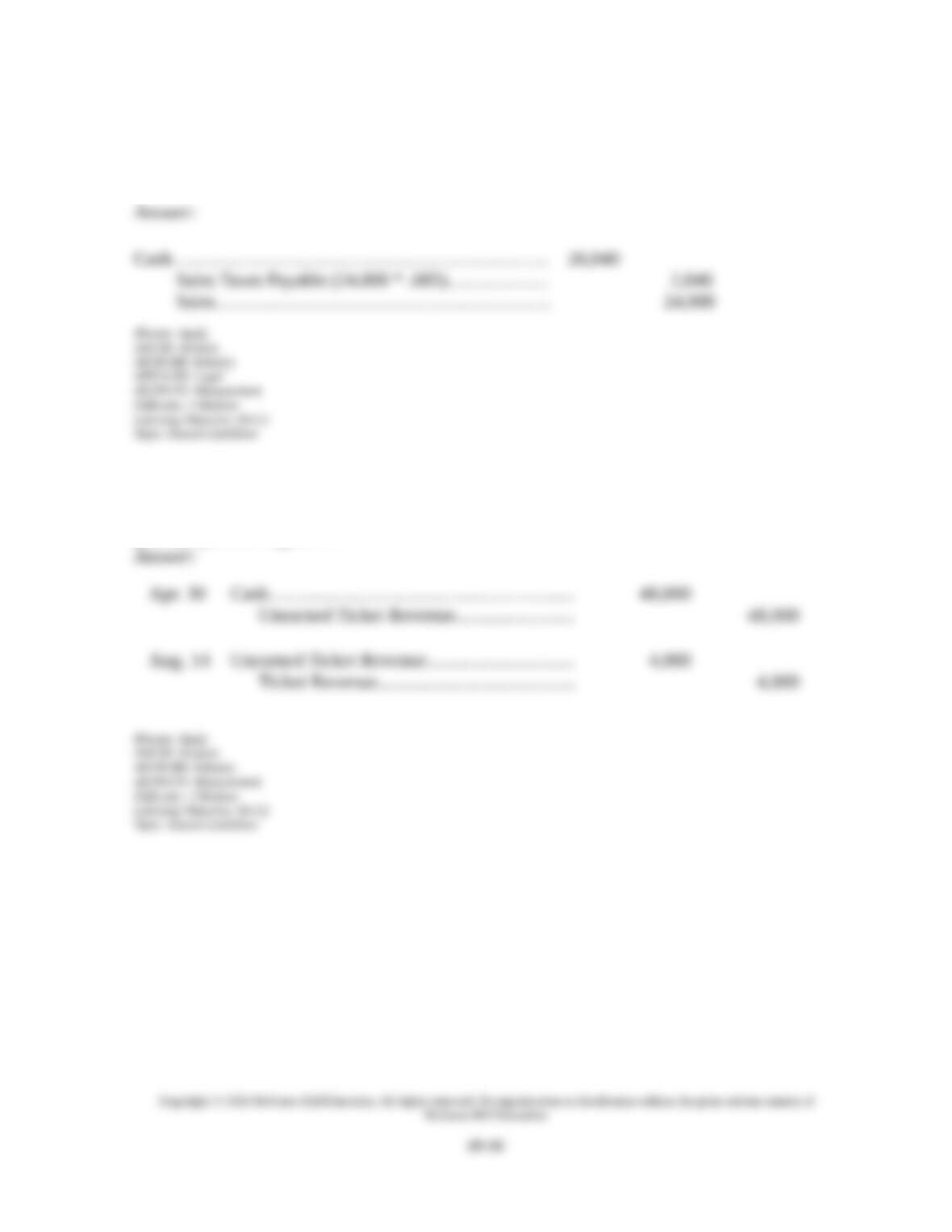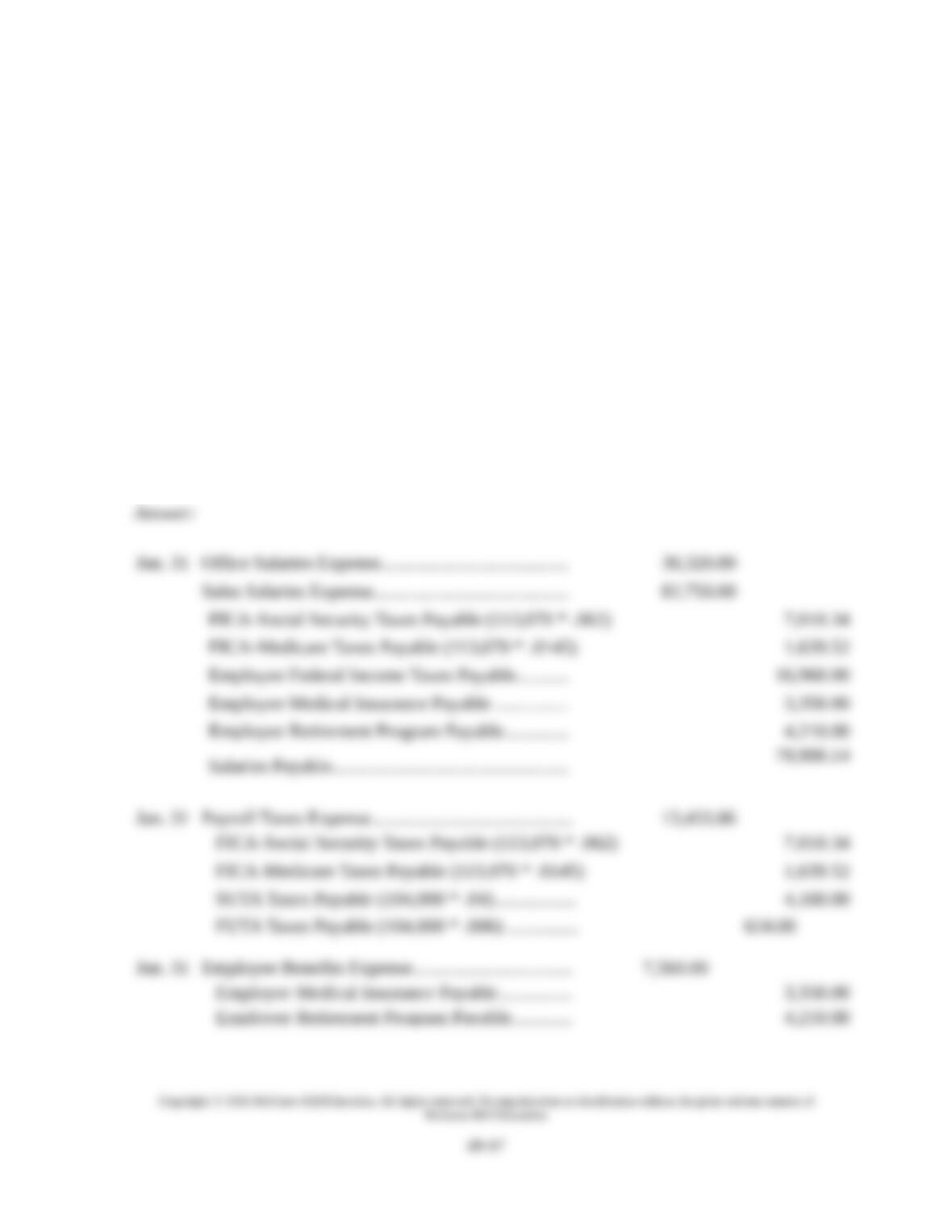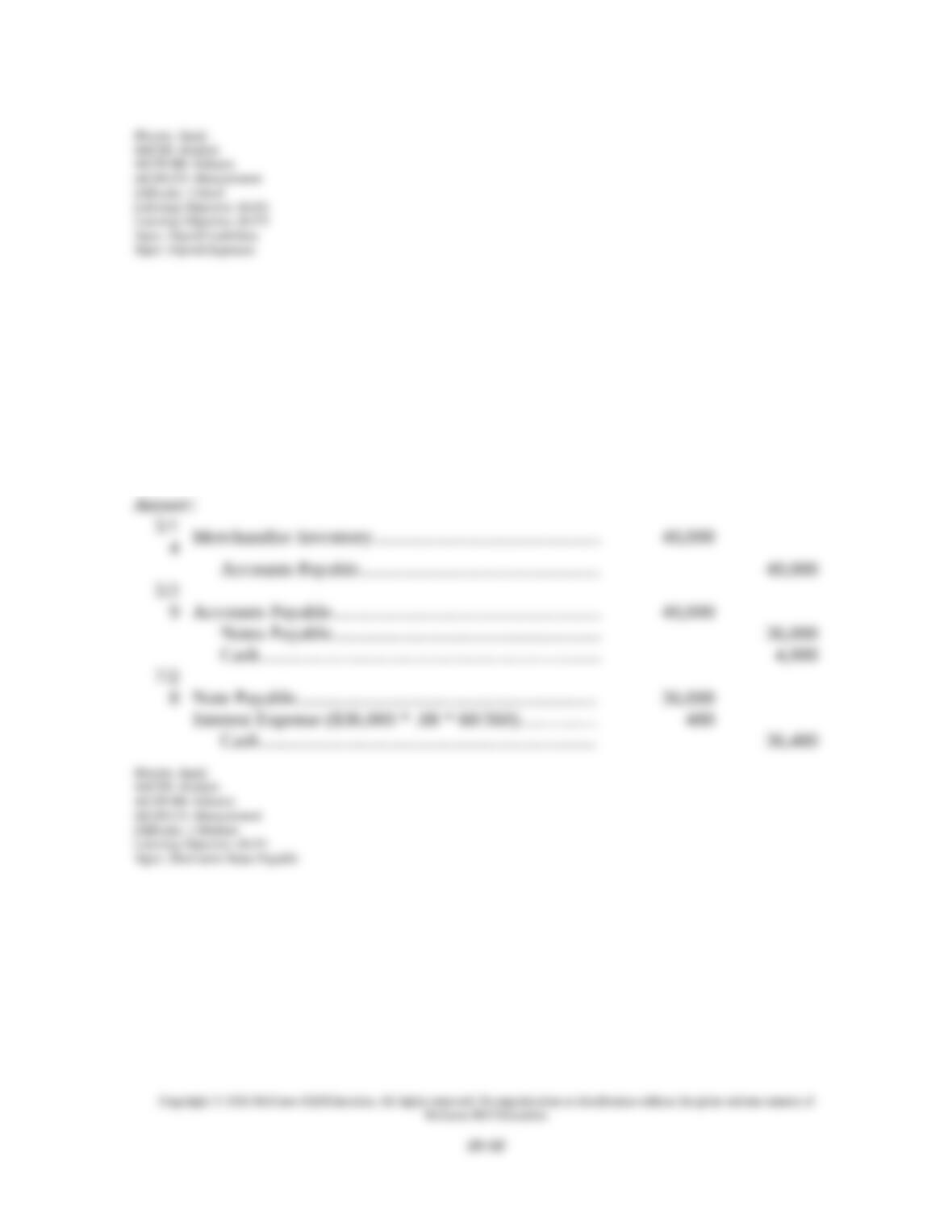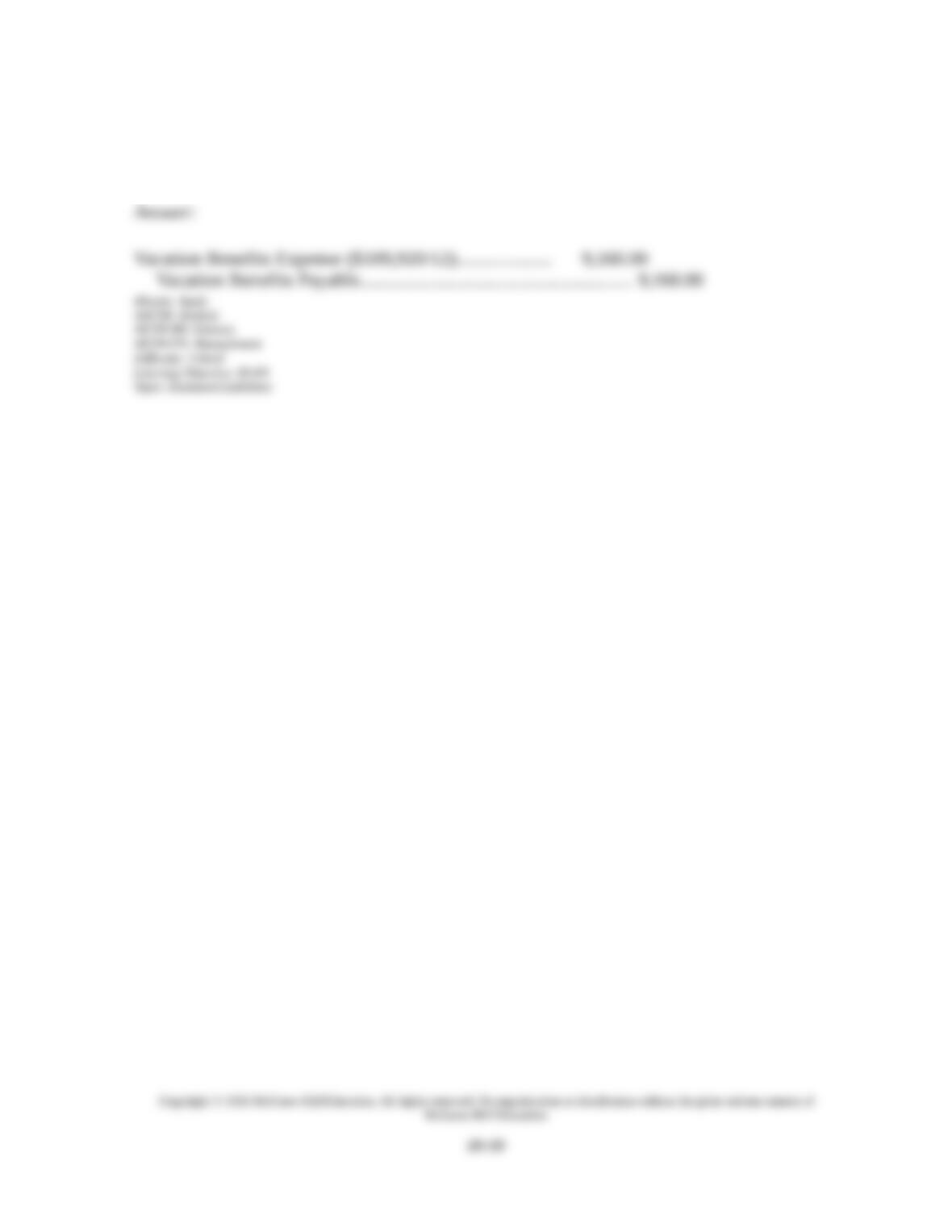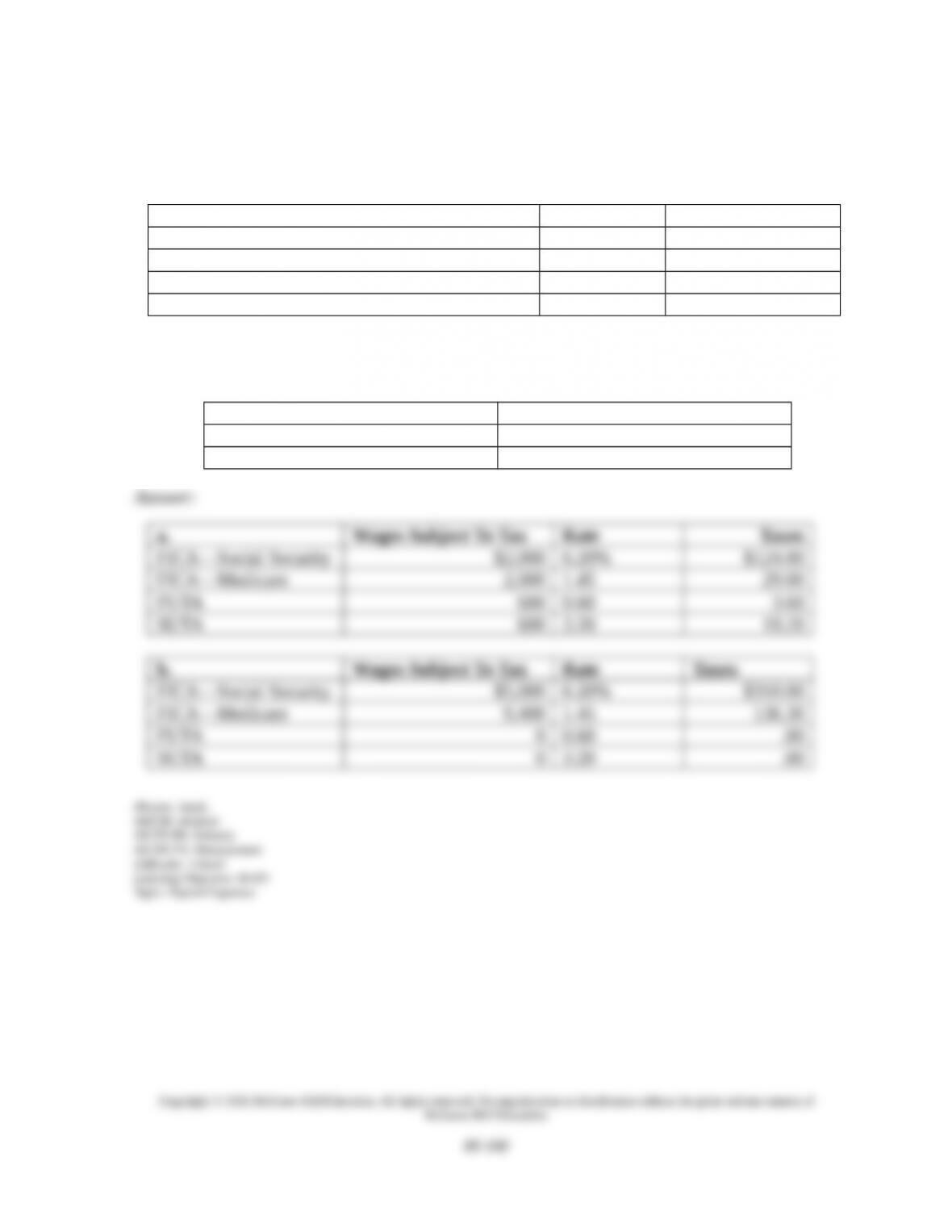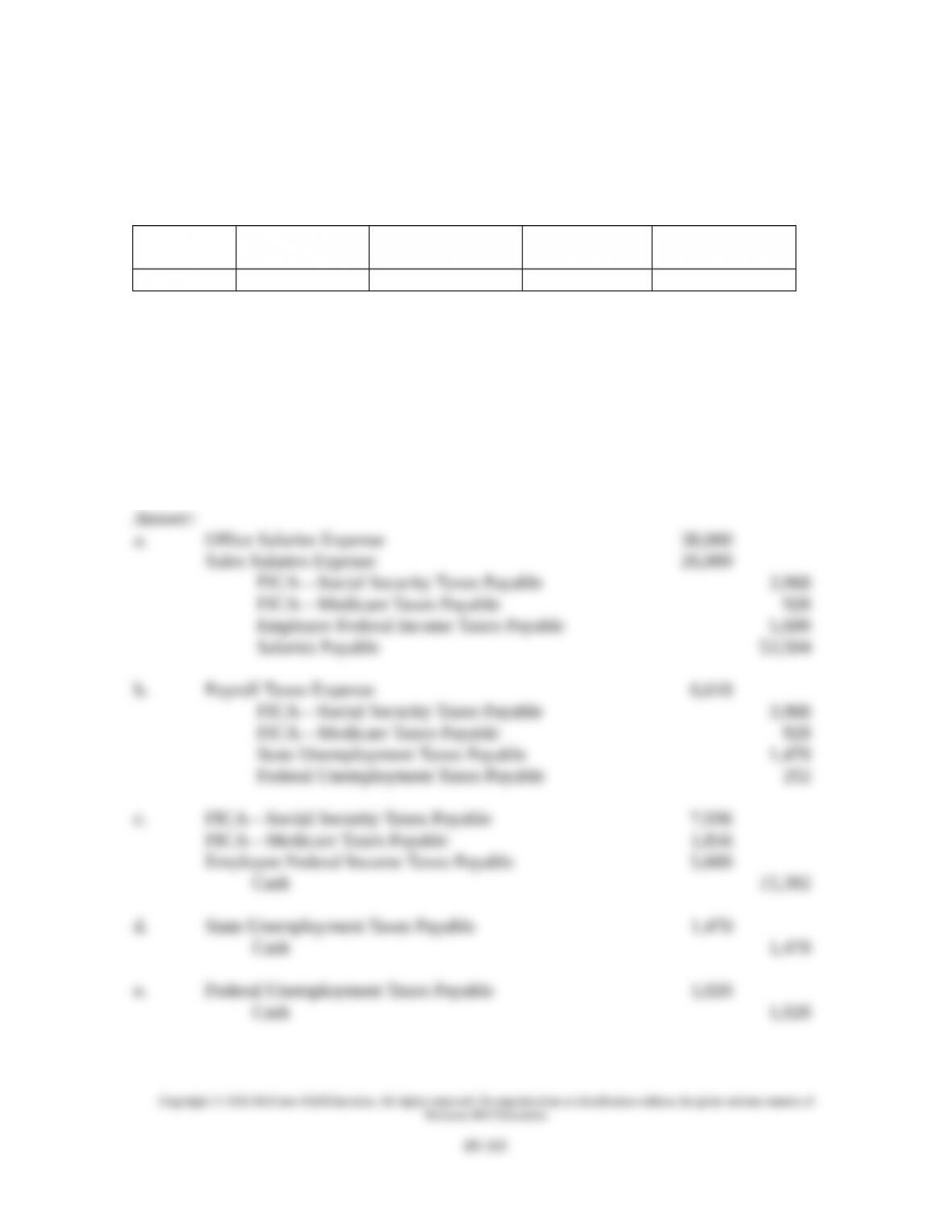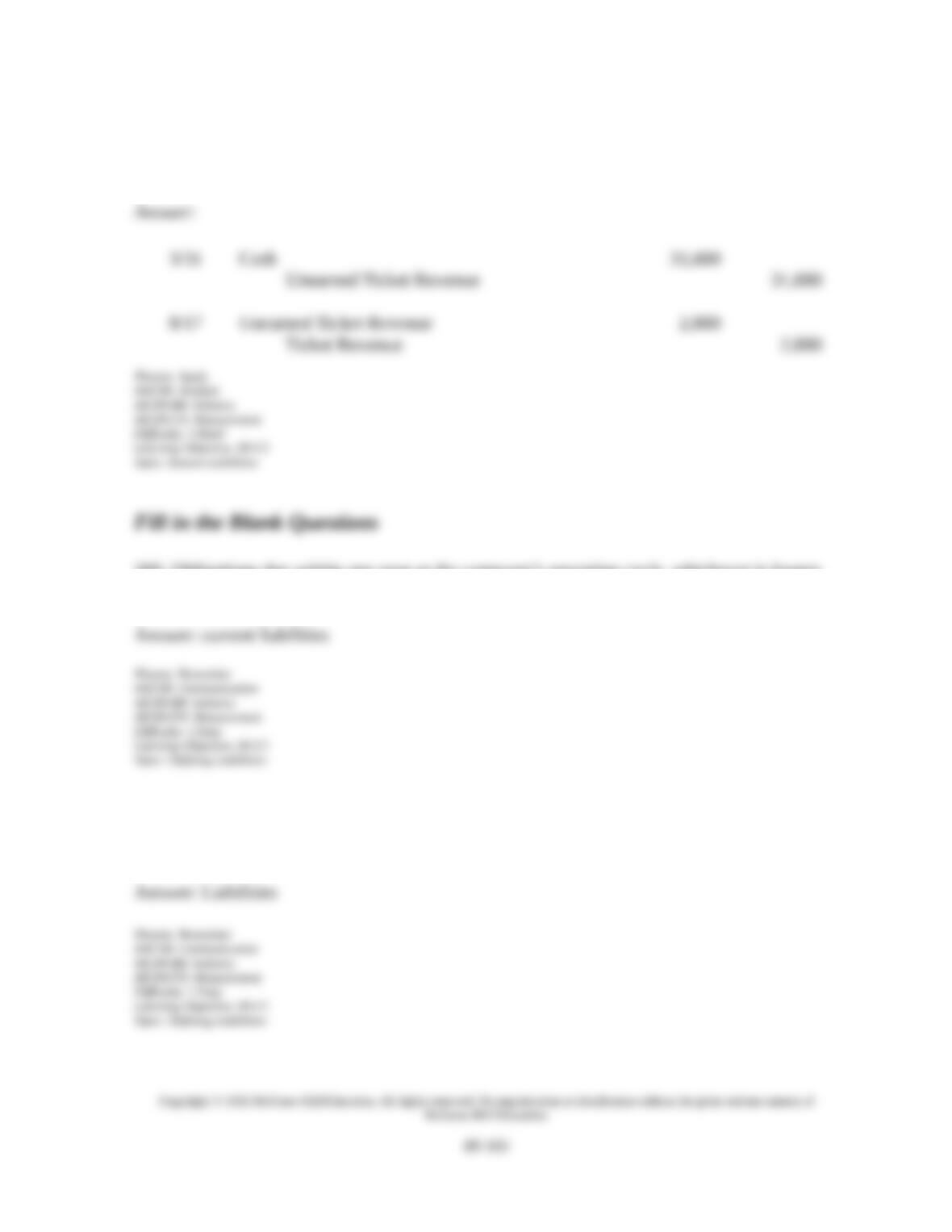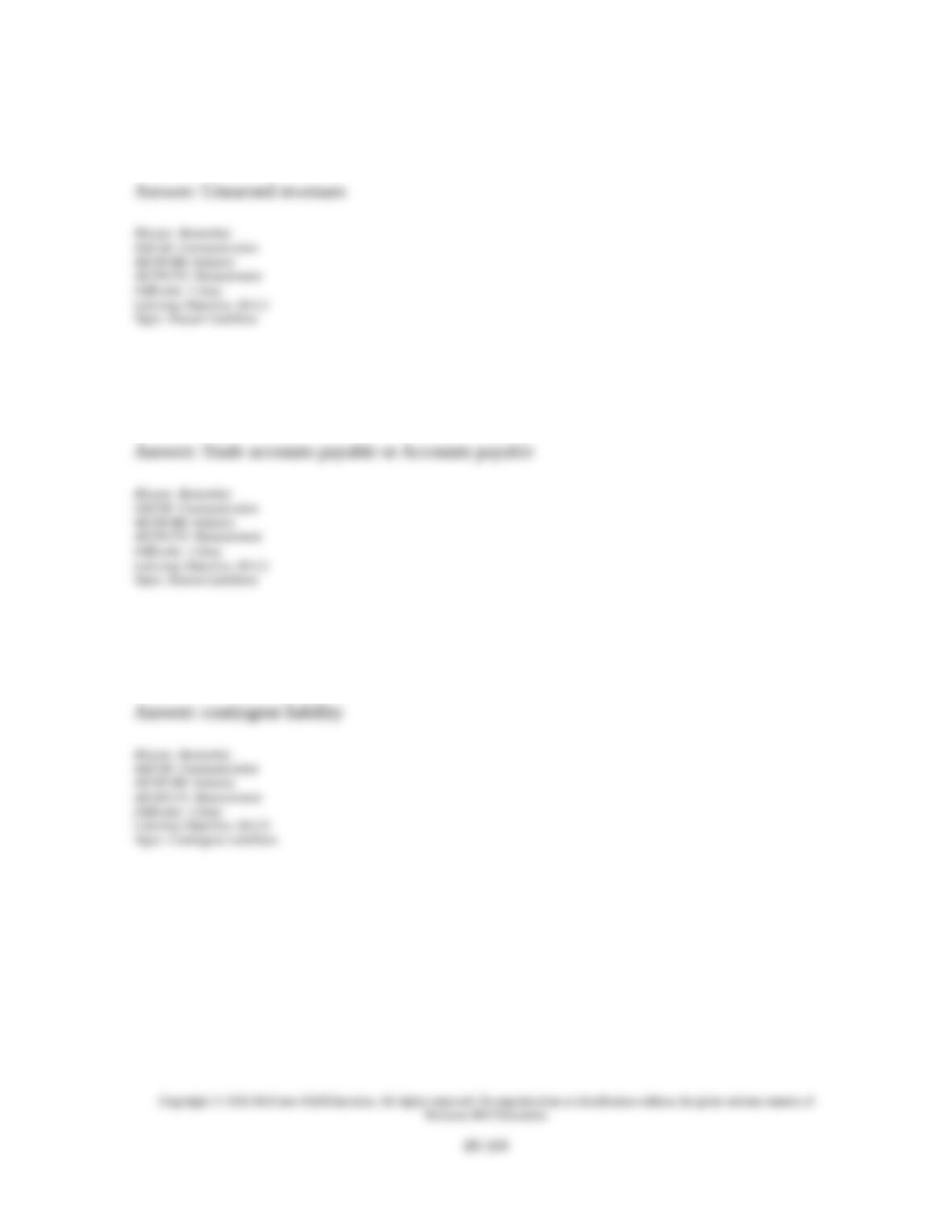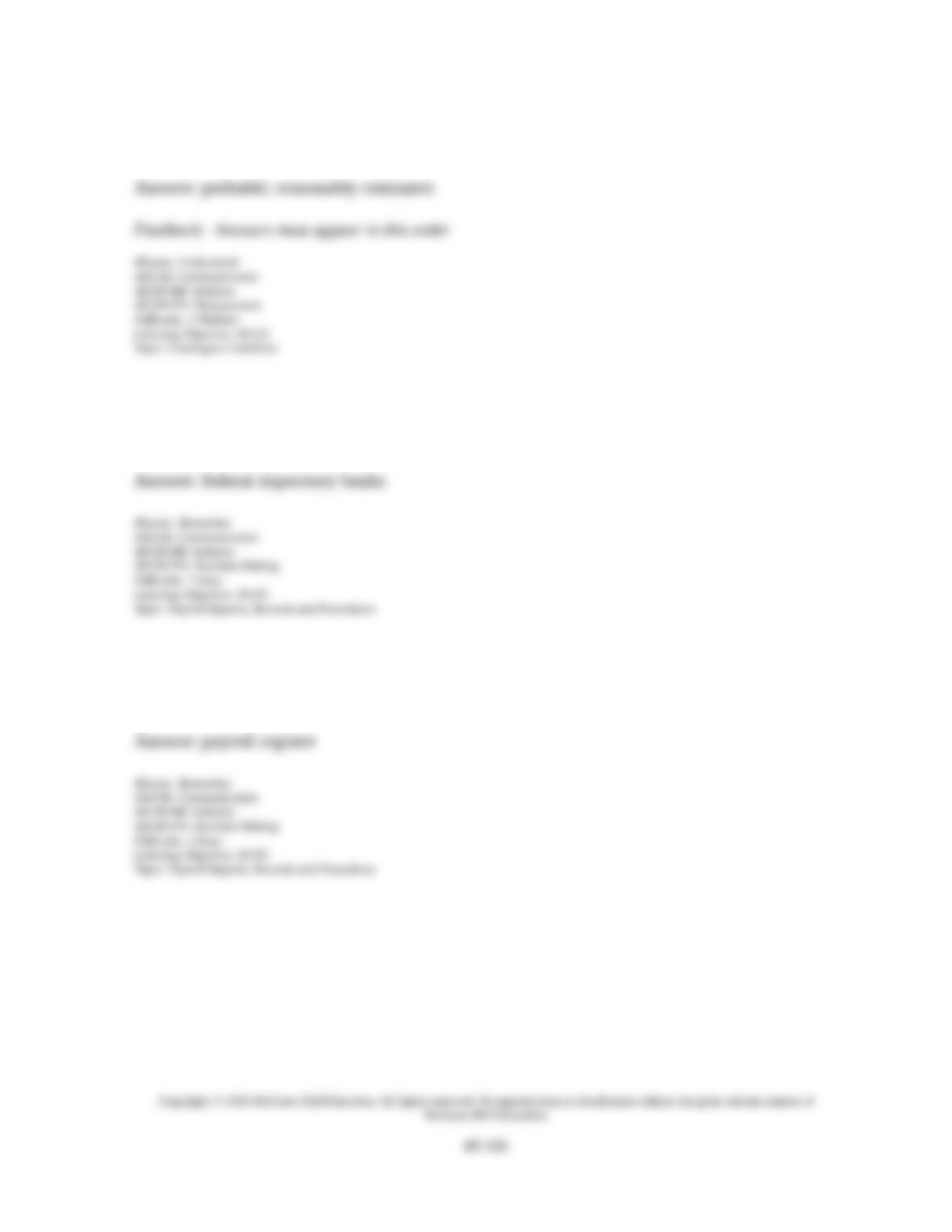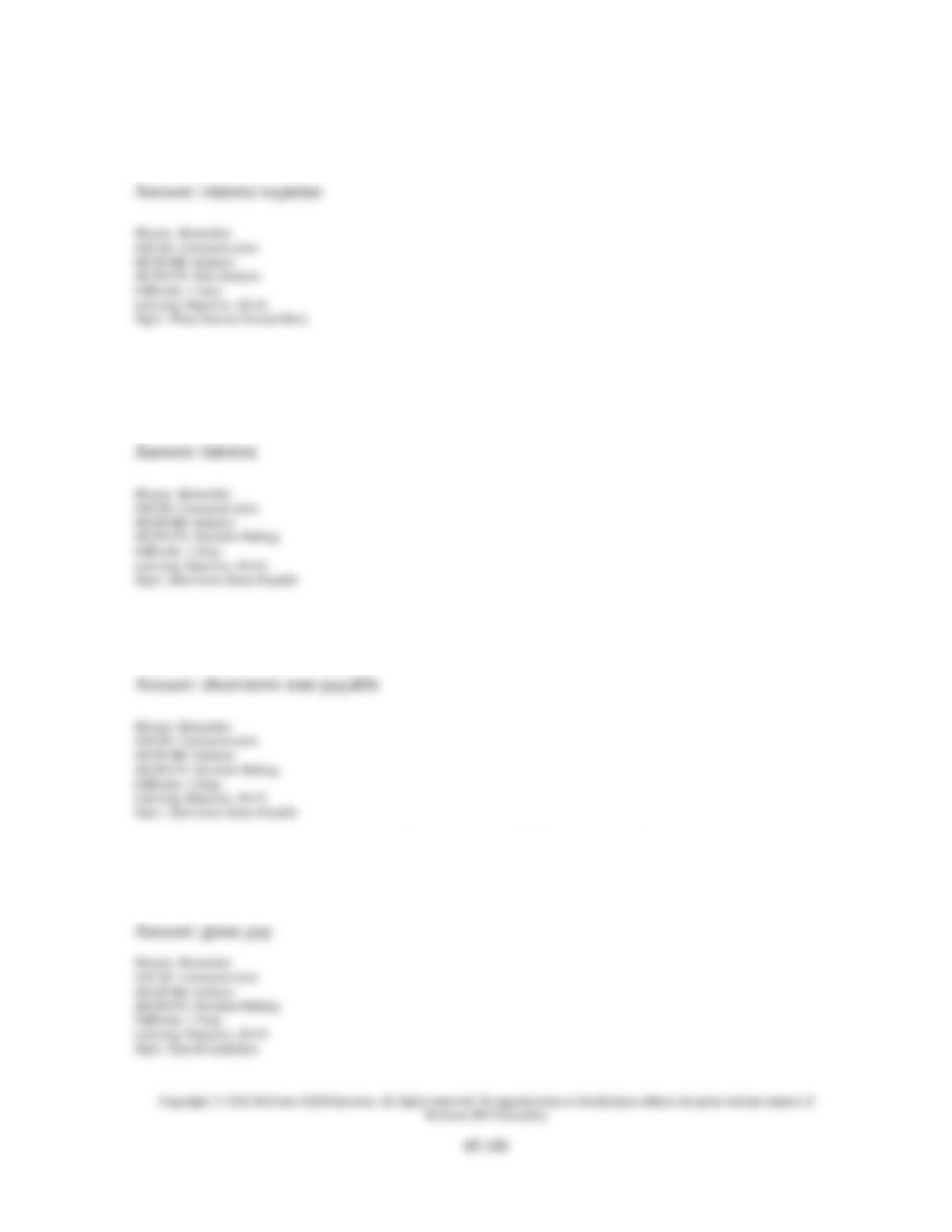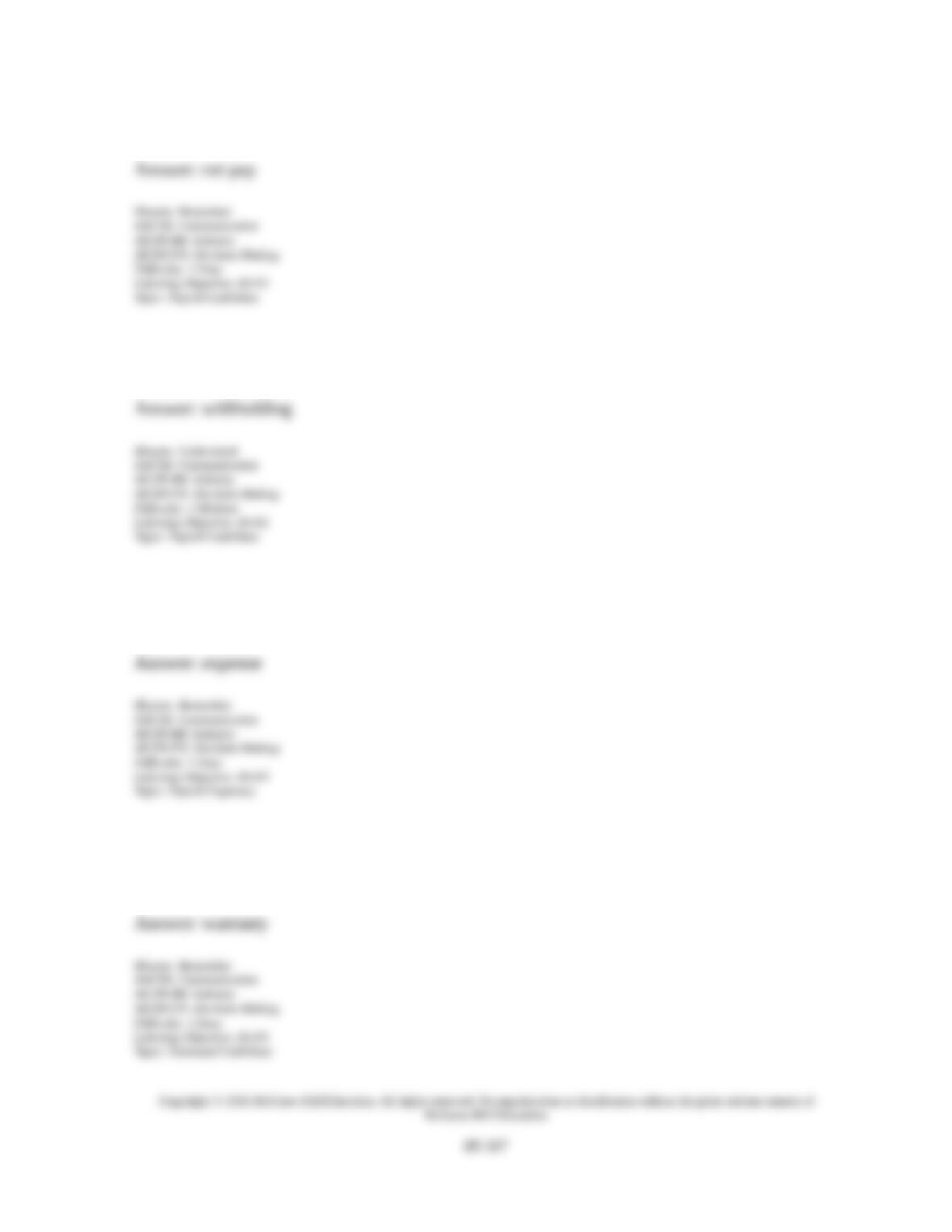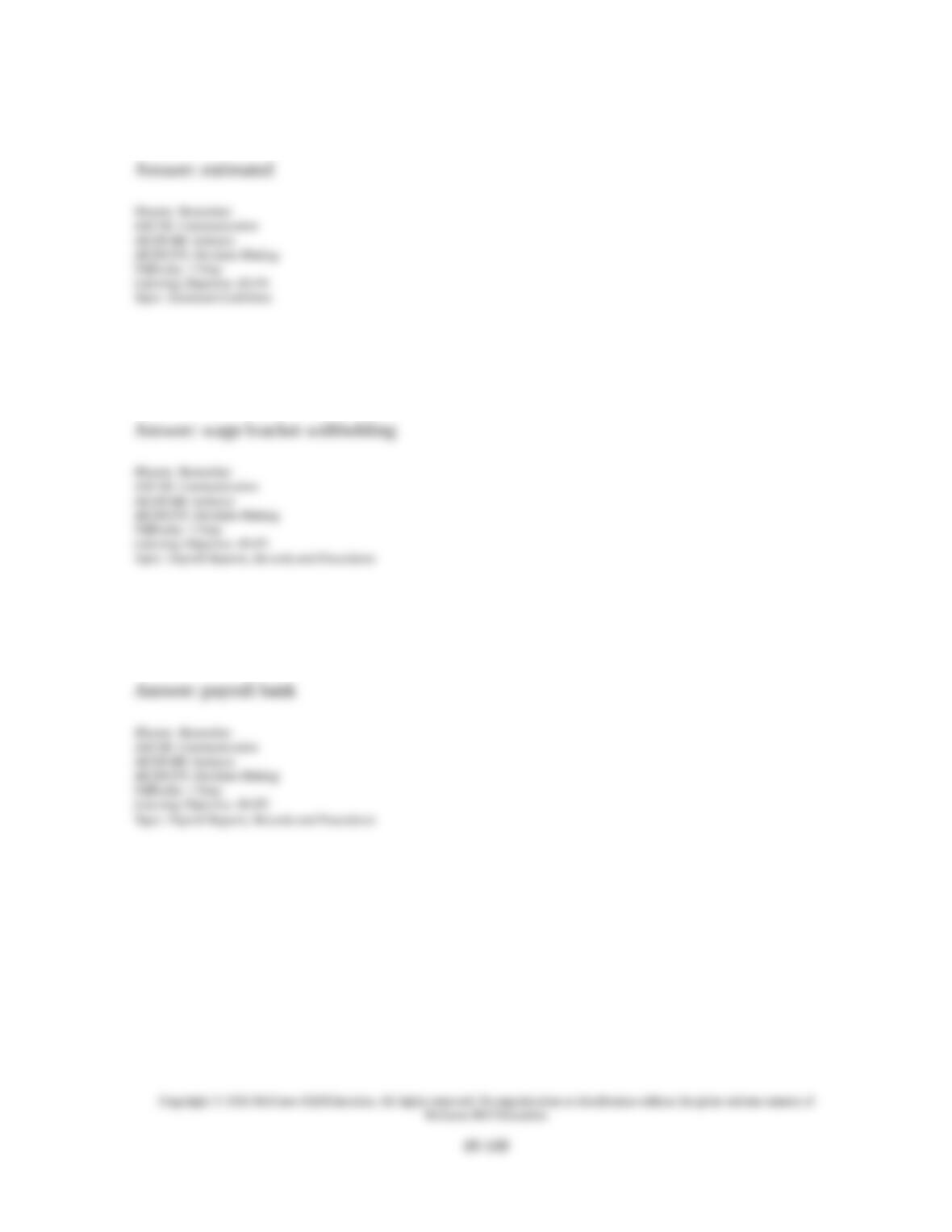197. Deacon Company provides you with following information related to payroll
transactions for the month of May. Prepare journal entries to record the transactions for May.
a.
Recorded the May payroll using the payroll register information given above.
b. Recorded the employer’s payroll taxes resulting from the May payroll. The company had a
merit rating that reduces its state unemployment tax rate to 3.5% of the first $7,000 paid each
employee. Only $42,000 of the current months salaries are subject to unemployment taxes.
The federal rate is 0.6%.
c. Issued a check to Reliant Bank in payment of the May FICA and employee taxes.
d. Issued a check to the state for the payment of the SUTA taxes for the month of May.
e. Issued a check to Reliant Bank in payment of the employer’s quarterly FUTA taxes for the
first quarter in the amount of $1,020.
Answer:
a. Office Salaries Expense 38,000
Sales Salaries Expense 26,000
FICA—Social Security Taxes Payable 3,968
FICA—Medicare Taxes Payable 928
Employee Federal Income Taxes Payable 5,600
Salaries Payable 53,504
b. Payroll Taxes Expense 6,618
FICA—Social Security Taxes Payable 3,968
FICA—Medicare Taxes Payable 928
State Unemployment Taxes Payable 1,470
Federal Unemployment Taxes Payable 252
c. FICA—Social Security Taxes Payable 7,936
FICA—Medicare Taxes Payable 1,856
Employee Federal Income Taxes Payable 5,600
Cash 15,392
d. State Unemployment Taxes Payable 1,470
Cash 1,470
e. Federal Unemployment Taxes Payable 1,020
Cash 1,020
Copyright © 2016 McGraw-Hill Education. All rights reserved. No reproduction or distribution without the prior written consent of
McGraw-Hill Education.
09-101
Office
Salaries
Sales Salaries Social Security
Taxes
Medicare
Taxes
Federal Income
Taxes
$38,000 $26,000 $3,968 $928 $5,600

























































































